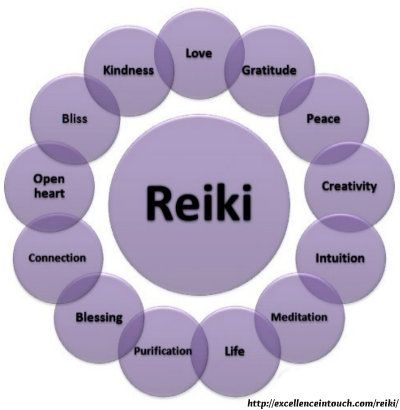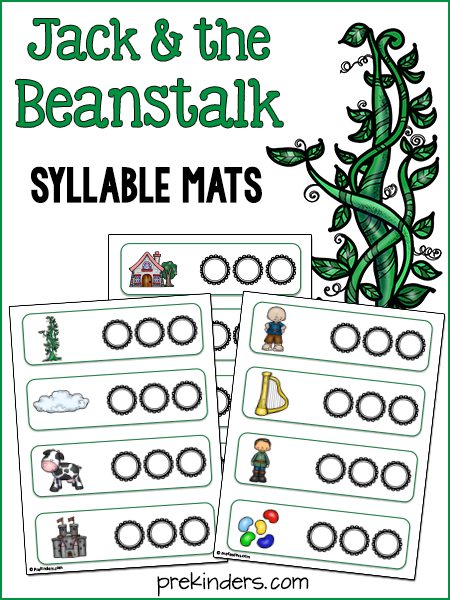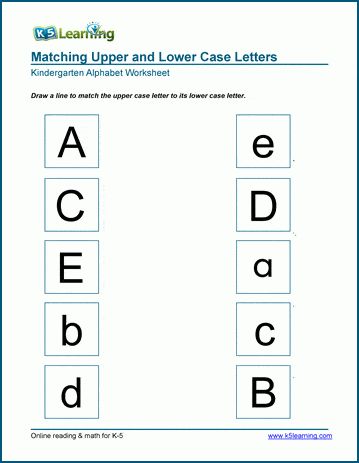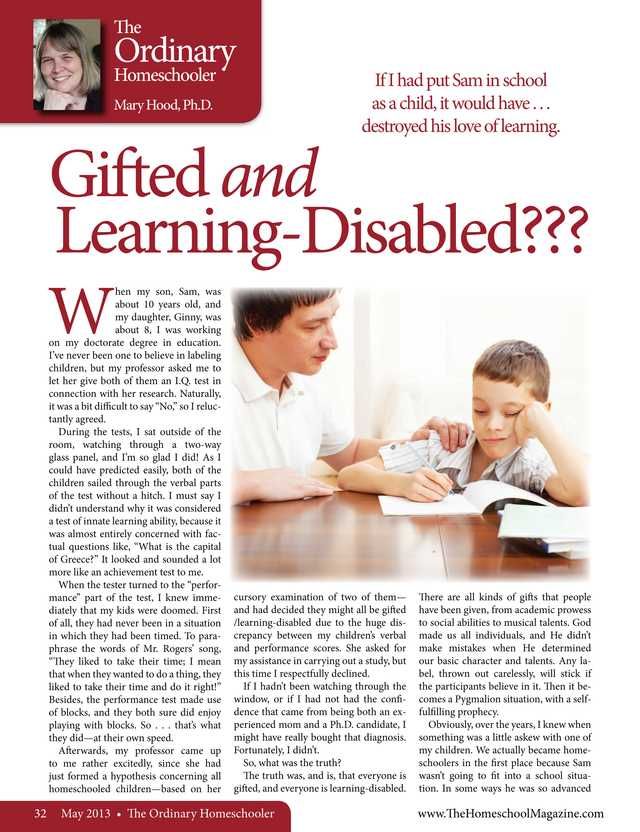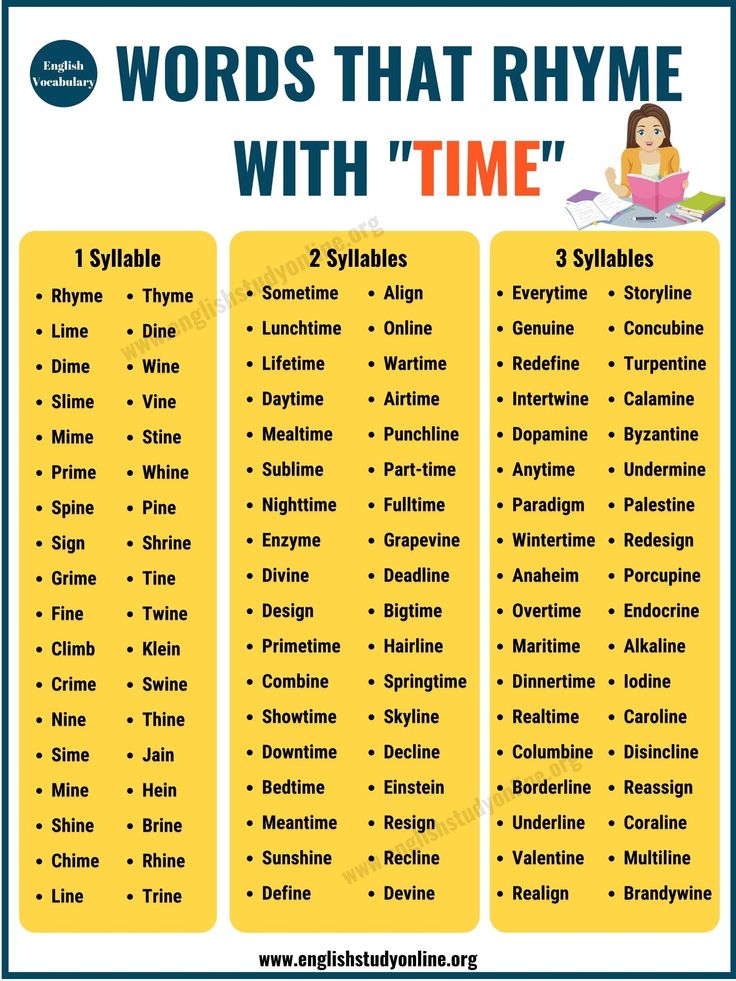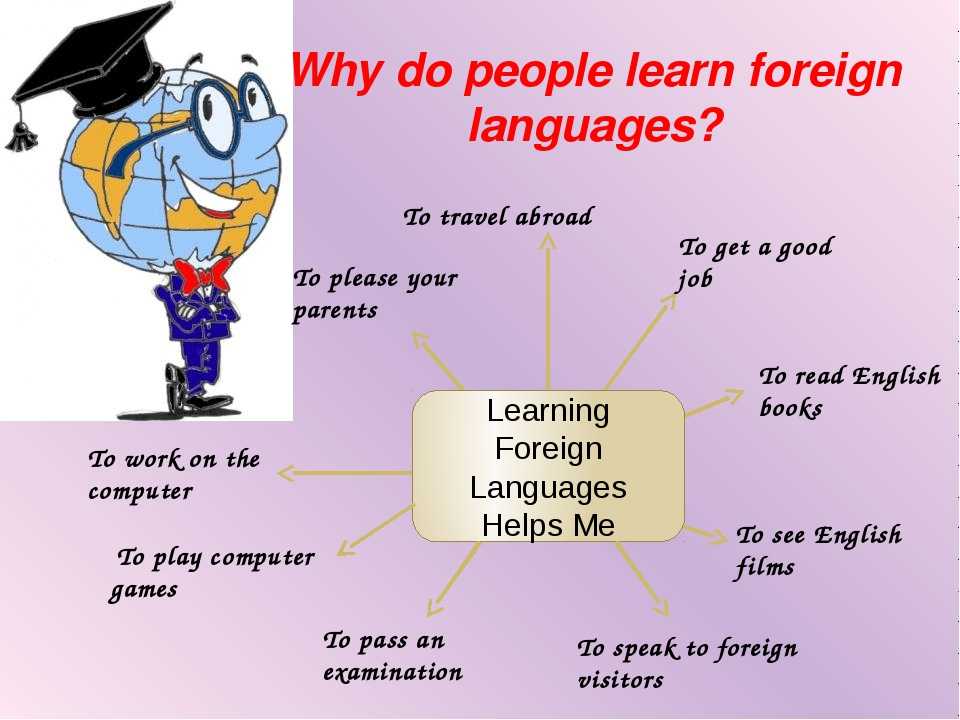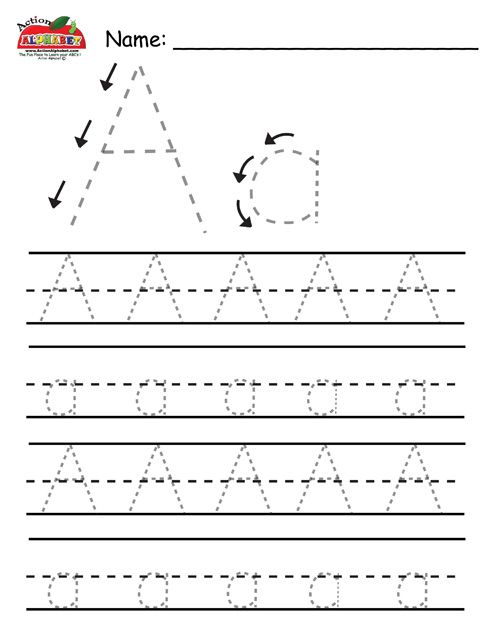Benefit of meditation for students
The 24 Brilliant Benefits Of Meditation For Students (Backed By SCIENCE)
I’ve been increasingly amazed by the sheer breadth of benefits of meditation for students. What was once something I dismissed as niche is now mainstream. Even better, the benefits are backed up by robust science.
I now wholeheartedly endorse meditation for students, and recommend it to many of my exam success coaching clients.
Meditation has been shown to fundamentally alter the brain itself, supporting the development of brain structures that handle attention (Davidson, 2008; Chiesa & Serretti, 2010), learning (Hölzel et al, 2011) and emotion (Lutz, 2008; Desbordes, 2012).
All this leads to an absolute wealth of benefits ranging from sharper concentration to better memory, from stress relief to improved mental health.
So I’ve distilled 2-3 decades of research into 24 mind-expanding benefits of meditation practice for students – read on to discover them all!
Table Of Contents
- Part 1: Meditation benefits students’ concentration and focus
- Part 2: Meditation has benefits for students’ stress levels
- Part 3: Meditation has benefits for students’ social interactions
- Part 4: Meditation makes students “smarter”…
- Part 5: Meditation supports good mental (and even physical) health in students
- Part 6: Given all this, it’s not surprising that meditation improves students’ academic outcomes
- Now over to you: ready to practice meditation?
- Higher grades, less sweat
Mindfulness vs meditation?
Quick aside before we get into it…
… am I talking about mindfulness or meditation? And what’s the difference, anyway?
- Meditation is the practice of “extended contemplation to achieve focused attention”, and comes in many forms.
- Mindfulness is simply “awareness of one’s internal state and surroundings”, and can also come in many forms.
Put the two ideas together, and you have a “mindfulness meditation”. That’s a way to training your attention (as if it were a muscle!) to achieve a mental state of calm concentration.
“Mindfulness meditation” is what most people mean by either word, and that’s predominantly what this article – and the studies I reference – are talking about.
Definitions based on the American Psychology Association Dictionary of Psychology
Part 1: Meditation benefits students’ concentration and focus
This first category is all about the moderate but significant impact mindfulness meditation has on attention (Sedlmeier et al, 2012).
1. Improved attention
Students who meditate are better able to control their attention (Chambers et al, 2008; Zenner et al, 2014), with less mind-wandering (Rahl et al, 2017).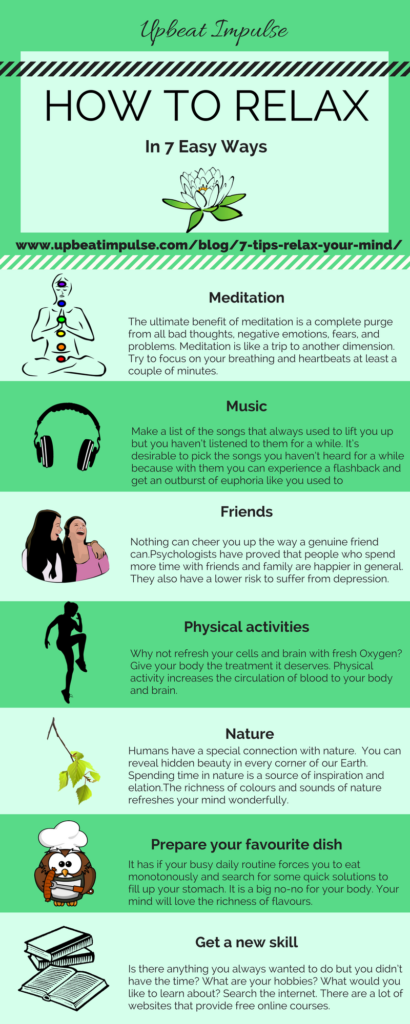
2. Fewer distractions, better focus
Mindfulness meditation helps individuals focus, for example, reducing “mindless reading” where they’re scanning the text without really absorbing the meaning (Zanesco et al, 2016).
3. Concentrate for longer
Mindfulness meditation also improves performance on tasks that need a concentration span over a long time (Jha et al, 2011).
Part 2: Meditation has benefits for students’ stress levels
Next up, let’s look at the research into meditation and stress:
Meditation has substantial benefits emotional benefits (Sedlmeier et al, 2012), such as reduced stress, improved well-being and higher self-esteem.
4. Lower stress levels
Reducing stress is one of the key reasons many adults take up meditation. There’s good evidence that mindfulness meditation programmes reduce feelings of stress at all ages: in adults (Chiesa & Serretti, 2009 review of 10 studies), in adolescents (Metz et al, 2013), and even in pre-schoolers (Thieery et al, 2016).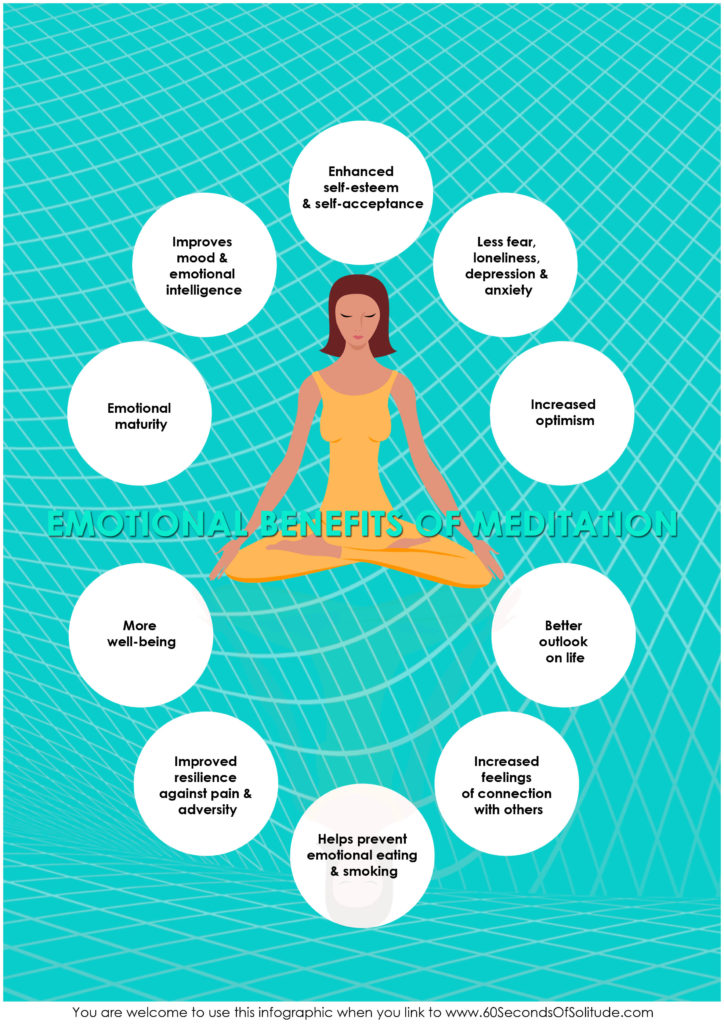
5. Cope better with stress
Reducing stress is great, but it’s rarely possible to entirely eliminate it from stressful situations, especially when a big assignment deadline or major exams is looming.
Meditation practice also helps students cope better with stress, continuing to perform even when under pressure (Bostic et al, 2015, Ortner et al, 2007).
6. Helps with exam nerves
Worrying about the exam, test-day nerves … lots of students get the jitters at some point as the stakes get higher. The good news is that students who have practiced meditation experience less test anxiety (Napoli et al, 2015).
7. Improved self-esteem
Meditation also has benefits for students’ self-esteem (Goldin & Gross, 2010, Biegal et al, 2009) – handy in today’s world, when social media seems to be doing its best to undermine our self-esteem.
8. Greater well-being and happiness
Meditation may even make you happier!
Meditation reduces negative emotions (Broderick & Metz, 2009), increases positive ones (Schonert-Reichl & Lawlor, 2010), and improves well-being (Huppert & Johnson, 2010).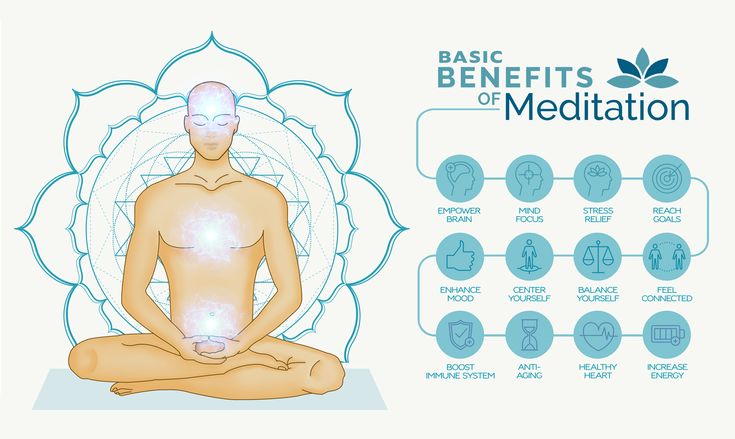
People’s minds wander 47% of the time, according to Harvard researchers (Killingsworth and Gilbert, 2010). That’s nearly half of our waking time! Mind-wandering often triggers unhappiness, either through ruminating on future worries or past events, or through frustration we’re not making progress on what we’re supposed to do.
So a focused mind not only gets more done, it seems to be a happier mind too.
9. Better resilience
Some researchers report that meditation can even boost students’ resilience (Hennelly, 2010), perhaps because they are better equipped to cope with stressful situations.
Your social life is an important part of being a student. So it’s good news: meditation has great benefits here too!
One benefit of meditation for students that I hadn’t expected when researching for this article was the improved social skills.
But several researchers have found mindfulness meditation improves students’ social skills (Schonert-Reichl & Lawlor, 2010, Napoli et al, 2015).
Meditation even seems to make the world a slightly more trusting place: students who meditate even show greater trust in their friends (Mendelson et al, 2010).
11. Greater empathy and compassion
Students who meditate show greater empathy for others (Schonert-Reichl & Lawlor, 2010, Cheang et al, 2019 review of 16 papers), and are more likely to help someone in need (Condon et al, 2013).
Students who meditate show a reduction in behavioural problems at school, whether they’re young children (Joyce et al, 2010) or teens / adolescents (Barnes et al, 2003). They also tend to show less aggression towards other (Schonert-Reichl & Lawlor, 2010).
Part 4: Meditation makes students “smarter”…
… though please don’t take that out of context!!
What I really mean here is that “meditation improves specific cognitive functions”.
Or to cut the jargon, meditation boosts certain aspects of how the brain processes and handles information.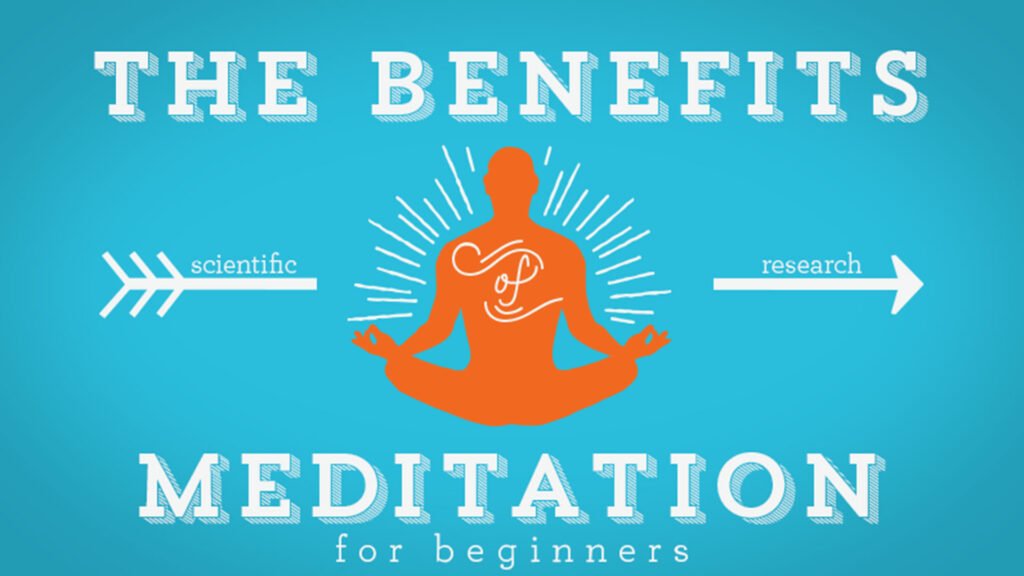
The cognitive benefits of meditation tend to be smaller than some of the other benefits (Sedlmeier et al, 2012). That’s perhaps not entirely surprising – if meditation could massively improve your IQ or memory, we’d all be doing it by now!!
Nevertheless, there are some significant benefits here, and even though the size of the benefits isn’t huge, together, they add up to a valuable little boost to academic performance.
12. Improved working memory
One easily-measured cognitive function (that’s strongly correlated with IQ) is “working memory”, in other words, the amount of information the brain can hold live, online, in the moment at any one time.
It’s a temporary store, a bit like RAM on a computer, which determines how many software programmes / browser tabs we can have open at once without the computer crashing. Psychologists measure it with tasks like the N-back test (take it here and measure your own working memory!).
There’s good evidence that meditation can improve working memory, which in turn will have benefits for learning and problem-solving (Quach et al, 2015; Chambers et al 2008).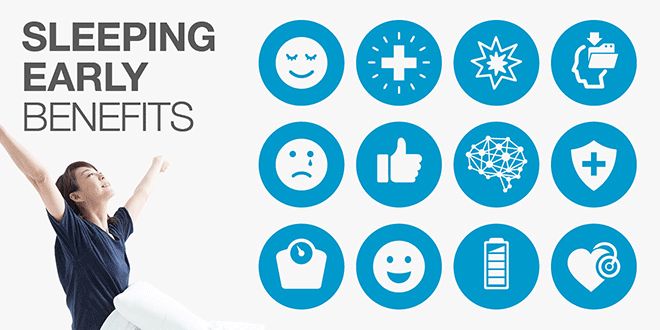
13. Improved response inhibition
Another aspect of cognitive function is our ability to control an initial instinct, and if necessary, block it, before acting upon it. As with working memory, psychologists love testing for response inhibition, partly because it’s very easy to measure (e.g. with the Stroop task – great fun if you’ve never done one!).
Meditation improves response inhibition, which is good news for impulsive students who tend to rush into an answer and get it wrong at first (Flook et al, 2010).
14. Metacognition
Metacognition refers to how we think about our thoughts, for example, planning, monitoring and evaluating our learning, or our feelings. It’s a strong predictor of academic success, and there’s evidence that it improves after a programme of meditation practice (Teasdale et al, 2002).
15. Meditation might even change the very fabric of a student’s brain
There’s even evidence that meditation can have a positive impact on brain structures associated with learning and problem-solving: such as a more developed prefrontal cortex, which handles processes like planning and problem-solving (Chiesa & Serretti, 2010), and a higher density of grey matter in brain regions associated with learning and memory (Hölzel et al, 2011).
Part 5: Meditation supports good mental (and even physical) health in students
Next up: taking care of your health – that’s really important if you want to become a successful student. And happily, meditation has plenty of benefits for your overall health:
16. Improved sleep quality
Sleep underpins students’ ability to learn, concentrate, as well as supporting good general physical and mental health (read Matthew Walker’s superb Why We Sleep). Students who participated in a mindfulness programme showed improved sleep patterns (Bootzin and Stevens, 2005).
The quality of sleep itself may be higher, too: studies have shown more favourable “brain wave” activity during sleep amongst those who practice meditation (Mason et al, 1997).
17. Relieves anxiety
Numerous studies have shown that meditation can substantially reduce anxiety amongst students at school (McKeering and Hwang, 2019, review of 13 separate studies, of which 11 showed positive benefits).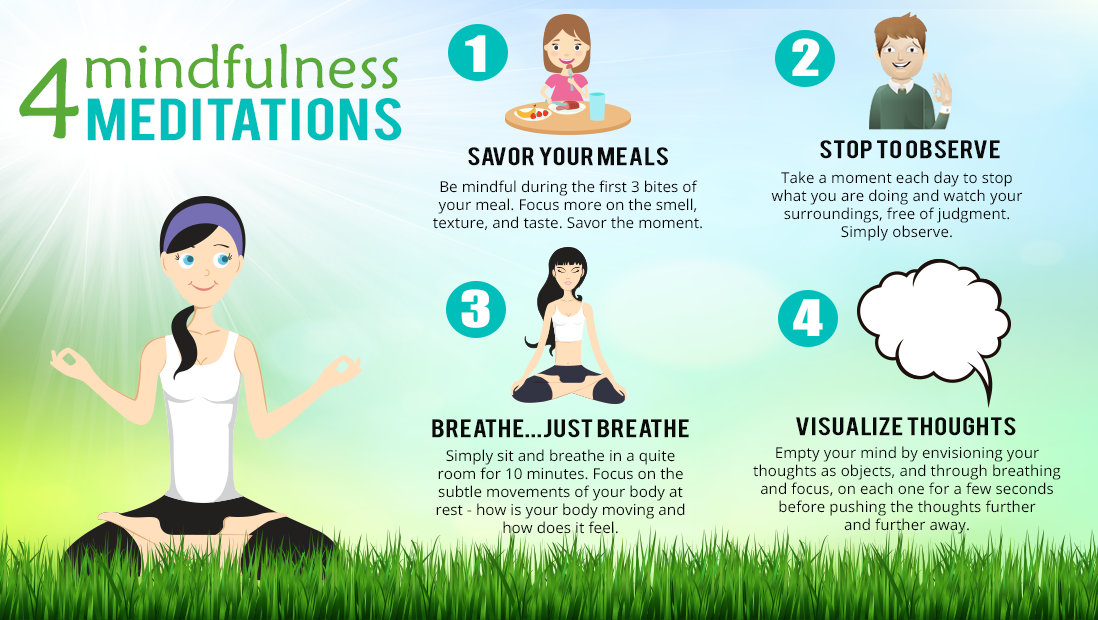
Psychologists often see anxiety as heavily linked to worrying about the future. So by training the mind to focus on the present moment, meditation may be reducing such unhelpful future-gazing and therefore lower anxiety.
18. Helps alleviate depression
Meditation practice can even help students with depression (Raes et al, 2014; Sibinga et al, 2016).
If anxiety is triggered by worrying about the future, depression is triggered by worrying about the past.
Again, meditation helps the mind stay in the present, avoids over-thinking what’s happened in the past, thereby alleviating depression.
19. Benefits for students with ADHD (probably)
Unsurprisingly, given the benefits for attention and focus, some researchers think that meditation should help students who have ADHD (Zylowska et al, 2008). The idea seems highly plausible, but a recent review of the scientific studies to date is inconclusive (Evans et al, 2018).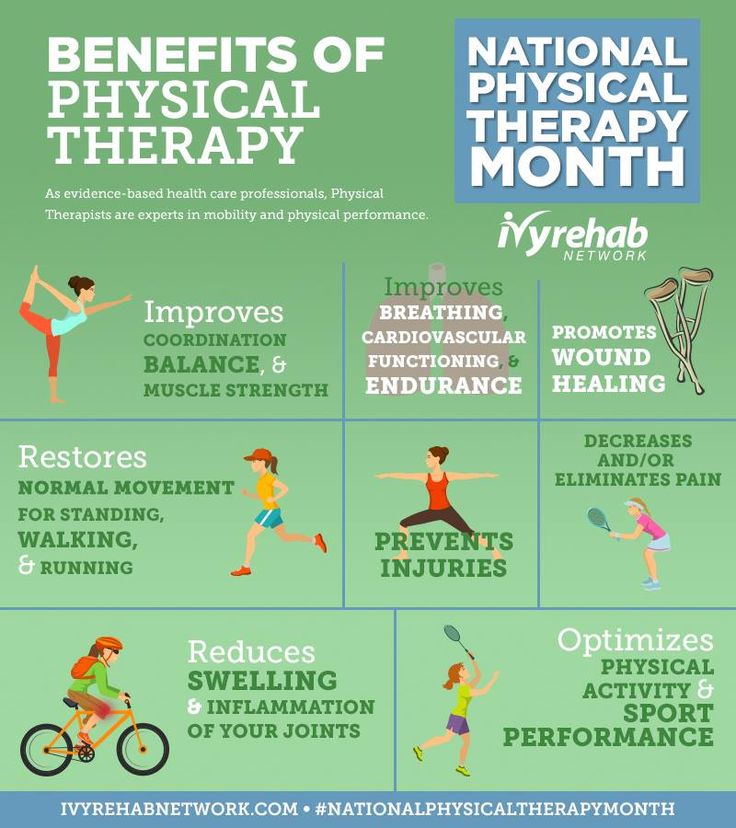 More evidence needed here, then…
More evidence needed here, then…
20. And even improvements in physical health
Meditation could even help with improved physical health (Grossman et al, 2003), especially heart health (e.g. Gregoski et al, 2011).
This makes sense when you think that high anxiety can lead to physical problems such as heart health. By reducing anxiety, meditation may also be reducing physical problems that often come with anxiety.
Part 6: Given all this, it’s not surprising that meditation improves students’ academic outcomes
You might expect that all this myriad of benefits might show up in improved performance in class and on tests and exams.
Well, you’d be right: there is certainly evidence that students who meditate do better.
My own instinct is that the biggest benefits are seen among those students who struggle with one or more of the problems I’ve listed so far, such as particular problems with anxiety, or mind-wandering, or stress.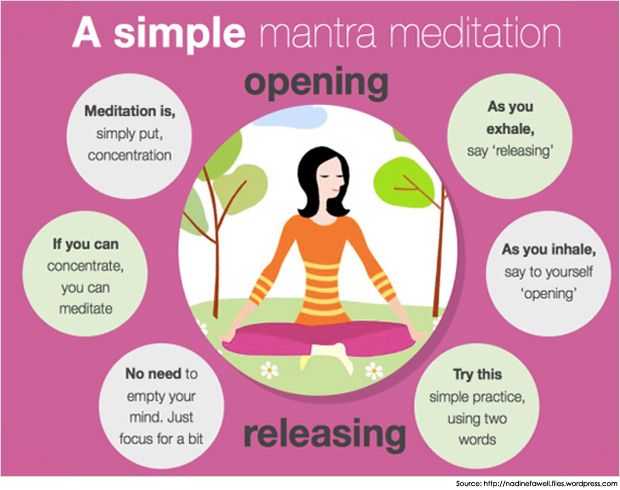
21. Meditation improves knowledge retention during lectures
Students who meditated scored 11% higher on a post-lecture quiz, compared to those who did not (Ramsburg and Youmans, 2014).
22. Higher GPA among college students
Fiebert and Mead (1981) reported that college students on a meditation programme scored an average GPA or 2.95 (out of a possible 4.0). That’s nearly 20% higher than their peers who did not mediate scored 2.48. Note that the evidence is mixed here: several studies since have been somewhat less conclusive (Wei Lin & Jung Mai, 2016).
23. Teacher reported outcomes
Teachers report that students who meditate show higher motivation, confidence, competence and effectiveness (Hennelly, 2010).
24. Improved performance with learning disabilities
Mindfulness practice also helps students with learning disabilities (Beauchemin et al, 2008).
Now over to you: ready to practice meditation?
Ready to go further? Great!
There are two easy steps I recommend you take to get started:
- Start by listening to Claire Kelly from the Mindfulness In Schools Project, who talked with me on the Exam Study Expert podcast.
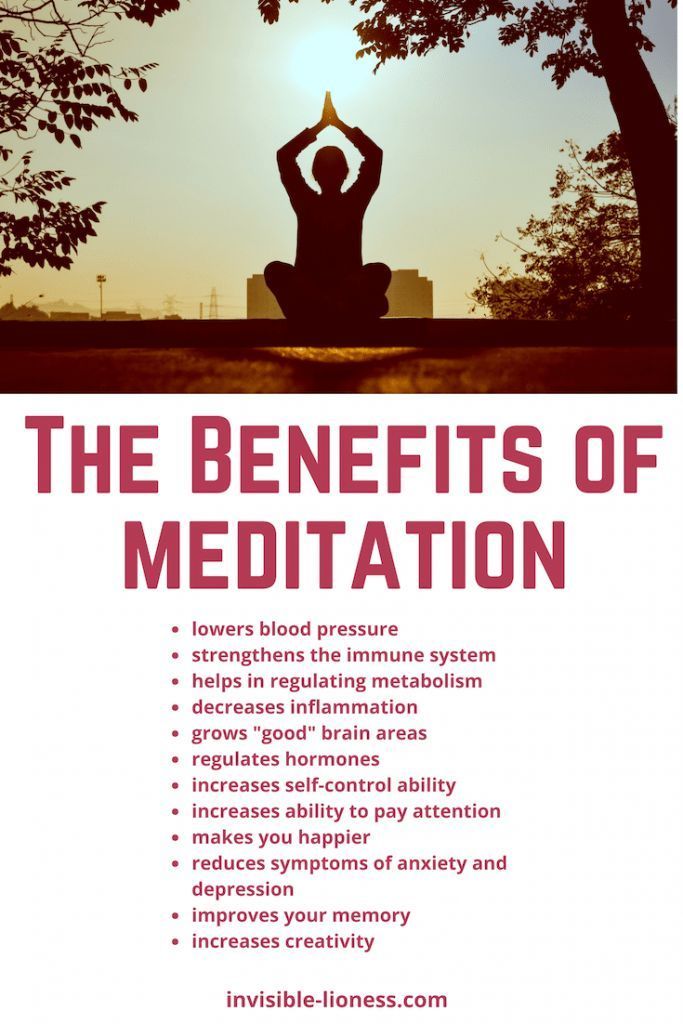
- It’s a great way to find out more about how you can get started with mindfulness meditation, whether you’re a student looking to get started yourself, or a teacher looking to bring mindfulness training to your school.
In fact, you can get listening right here:
- And if you’re not sure how to get started with meditation, then I wholeheartedly recommend you try Headspace.
I’ve been using Headspace personally for years, typically most days. So I know how well it works! I also recommend it to many of my coaching clients and at talks in school.
Headspace has some fantastic stuff on their specifically for students, including on exam stress and test taking anxiety. They’ve also got some wonderful sections on content (stories / soundscapes) to help you sleep, and even curated focus music playlists. So I’m thrilled that Exam Study Expert and Headspace now have a partnership.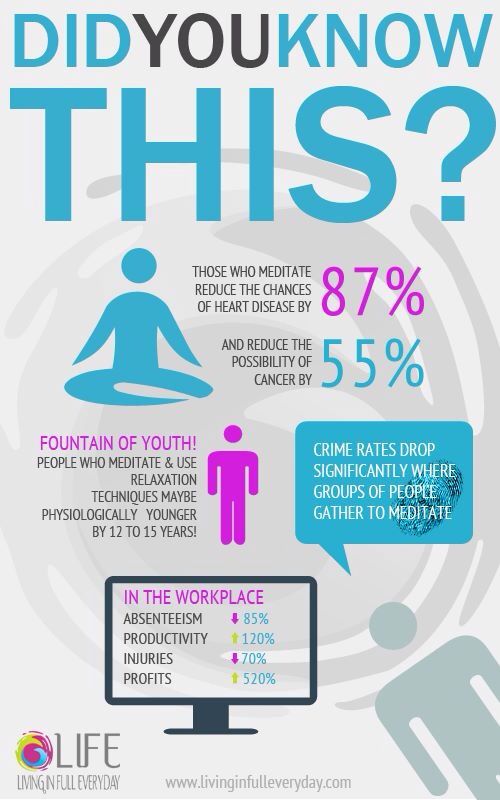 You can click here to get started with Headspace for free.*
You can click here to get started with Headspace for free.*
Happy meditating!
*I may get compensated if you use Headspace, but this has no bearing on my decision to recommend it to you. In fact, I had been personally using and enthusiastically recommending Headspace for 3-4 years before we started our commercial partnership.
- About
- Latest Posts
William Wadsworth
Founder and Director of Learning Science at Exam Study Expert
William Wadsworth is a Cambridge University educated psychologist and learning science researcher. He got top 0.01% exam results in the UK as a student over 10 years ago, and ever since has been obsessed with helping subsequent generations of students ace their exams, through the science of studying smarter, not harder. Half a million students in 150+ countries follow his advice through this site and the Exam Study Expert podcast, and he’s the best-selling author of the “ingenious” guide to test-taking strategy, Outsmart Your Exams.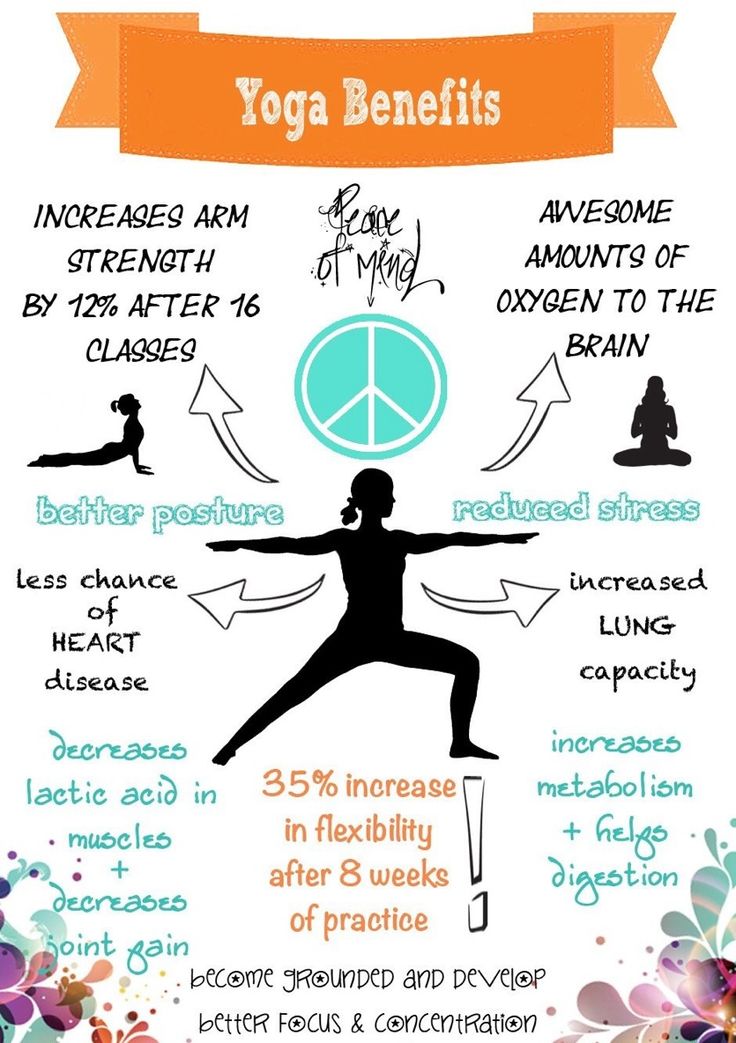 To get in touch with William, including to find out more about his transformational 1:1 coaching sessions, please click here.
To get in touch with William, including to find out more about his transformational 1:1 coaching sessions, please click here.
Latest posts by William Wadsworth (see all)
Pause, Refocus, Assess: Meditation in the Classroom
Schools can benefit from meditation. This practice equips students with breathing strategies to refocus mindsets for learning. Meditation supports students' transitions from class to class, and it cultivates a community of compassion and respect. My students and I meditate on a daily basis. In this post, I provide seven tips for implementing a classroom practice.
1. Develop a personal practice before introducing it to your students.
Students who are unfamiliar with meditation may find it awkward and strange. Showing competency will settle their nerves and foster trust. Join a community center or yoga studio that offers meditation. Meditate at home, in a park, or on the subway. Practice until you feel comfortable introducing it to your students.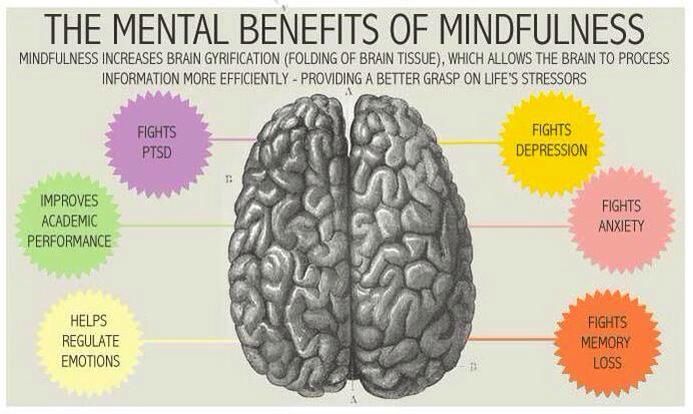
2. Be consistent.
Meditation is integral to my teaching practice. Students meditate during the first five minutes of every class that I teach -- even when I substitute for a colleague. A consistent and ritualized practice yields stronger benefits and clear expectations.
3. Use meditation as a strategy for refocusing.
Many professional athletes practice meditation, including Olympic gold medalists Misty May-Treanor, Kerri Walsh, and Lebron James. Michael Jordan's coach, Phil Jackson, taught him to meditate during games as a tool to regain focus. Showcasing these public figures will hook kinesthetic learners and student athletes, as well as framing meditation as a practice removed from the religious connotations that some people assume. I introduce mindful breathing as a strategy. A community norm displayed at the front of my classroom reads, "Focus: One Breath, One Mind." When I ask students to focus, they understand that I'm encouraging them to recenter by engaging in mindful breathing.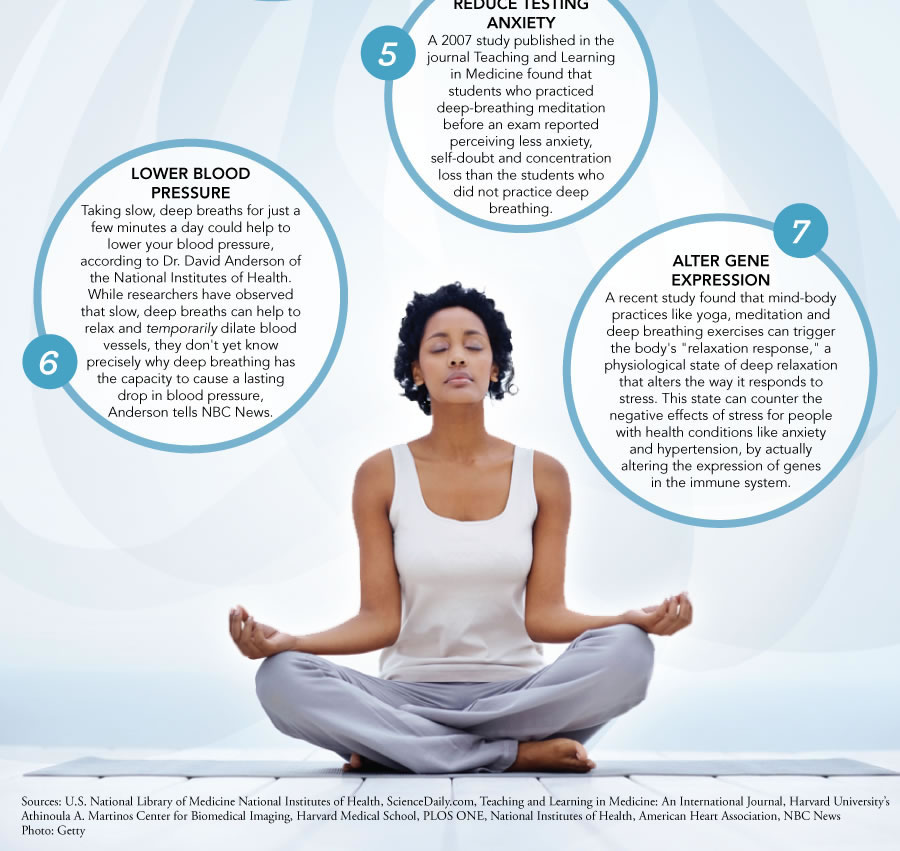
4. Share the benefits of meditation with your students.
Studies have found that meditation has profound benefits. Dr. Jon Kabat-Zinn and the Greater Good Science Center at the University of California, Berkeley are strong resources. Their research discovered that:
- Meditation boosts our immune system's ability to fight off illness.
- The practice increases positive emotions while reducing stress and negative feelings.
- It helps us tune out distractions and improves attentiveness.
- Meditation fosters compassion and kindness.
5. There are multiple ways to meditate.
As students arrive to my classroom, a student volunteer places a Tibetan singing bowl at the center of the room. Once the class settles in their seats, the volunteer hits the bowl to initiate the silent meditation. Students sit with both feet on the floor and hands on their laps. Some close their eyes, while others stare forward. A few rest their heads on the desks.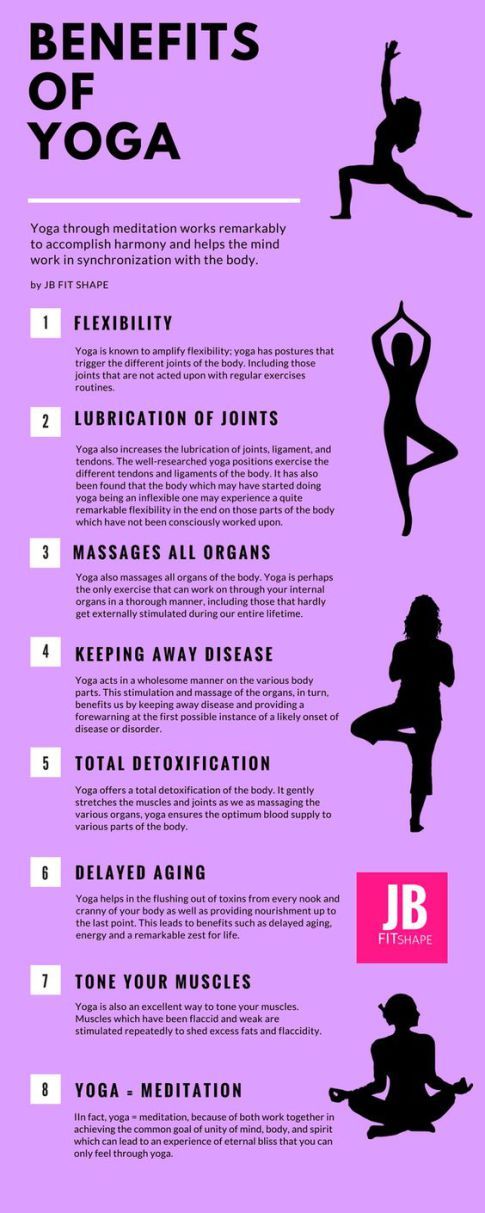 After five minutes, the volunteer hits the bowl again to end our practice. I provide additional options for meditation. Students can also:
After five minutes, the volunteer hits the bowl again to end our practice. I provide additional options for meditation. Students can also:
- Lie on a mat in resting pose, or savasana.
- Breathe with their hands on their bellies.
- Expand and contract a mini-sphere to mimic and visualize the movement of their lungs during breaths.
- Count breaths using a beaded necklace or mandala beads.
- Color in the spaces of printed-out mandalas or geometric patterns.
6. Evaluate the impacts.
By conferencing with students and collecting and analyzing data, you can assess the practice's impact on their academic performance. Monthly, students reflect on their readiness for class, measure their calmness after meditation, and share issues and concerns about the practice. Upon reviewing their responses, I select and conference with five students. We explore strategies to refine their practice and strengthen their self-regulation and their focus on coursework.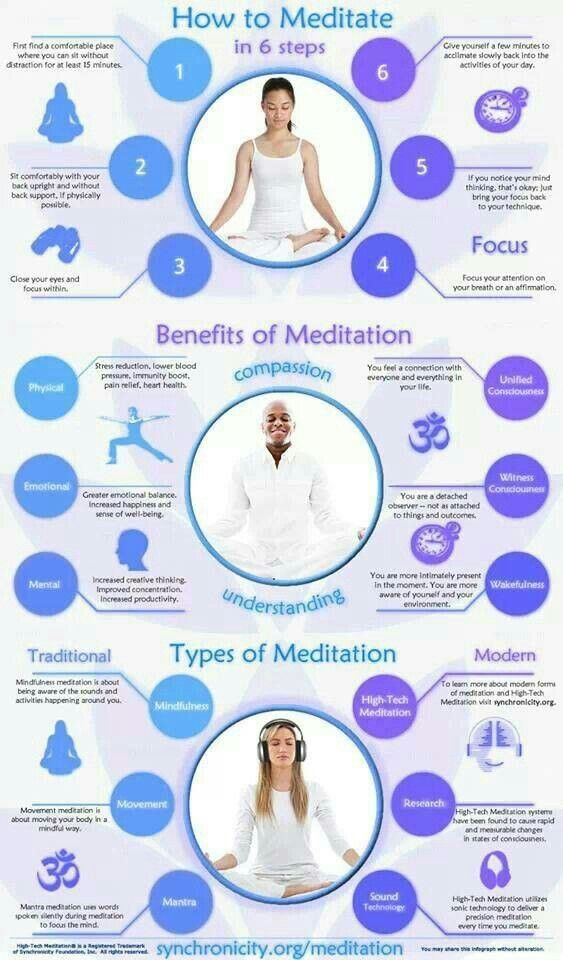 Students apply these modifications in following sessions. I monitor their progress for two weeks, and I often observe improvements in their effort, participation, work products, and contributions during discussions. For example, one student modified his meditation practice by coloring mandalas and moving his seat to a different section of the room. In a week after the adjustment, his classwork completion increased by 20 percent. He wrote in a later reflection that coloring mandalas at the beginning of class helped him become calmer, more settled, and focused.
Students apply these modifications in following sessions. I monitor their progress for two weeks, and I often observe improvements in their effort, participation, work products, and contributions during discussions. For example, one student modified his meditation practice by coloring mandalas and moving his seat to a different section of the room. In a week after the adjustment, his classwork completion increased by 20 percent. He wrote in a later reflection that coloring mandalas at the beginning of class helped him become calmer, more settled, and focused.
7. Approach your administration and colleagues.
School districts across the country have revised their discipline code to move away from an over-reliance on suspensions and toward restorative justice. Meditation and mindfulness practices are aligned with this new focus on supporting students' social and emotional learning and health. Present your school leaders with research (as in #4 above), data, and anecdotes from your classroom (as in #6). Invite administrators and colleagues to join in. Meditation is rooted in presence and can only truly be understood and appreciated in practice.
Invite administrators and colleagues to join in. Meditation is rooted in presence and can only truly be understood and appreciated in practice.
In the comments section below, please share your experiences with meditation in school.
Meditation for children: 3 exercises for every day
Listen to your body For parents
Teaching children meditation techniques increases mindfulness, develops self-control and empathy. Meditation helps with stress, hyperactivity and depression in schoolchildren and improves academic performance in the sciences.
It is generally accepted that meditation requires special adult self-discipline and concentration. In fact, this technique can be used at any age. The main thing is to choose the right exercises. Three ways to get started with kids.
1. Balloon
This is a simple deep breathing exercise with a strong visual component. Performed sitting or standing.
Exercise
- Relax and inhale and exhale deeply through your nose.

- Take a slow, deep breath and try to fill your belly with air, as if you were trying to inflate a big balloon. Try to inflate your belly as much as you can.
- Slowly release the air from the balloon, exhaling through the nose.
Remind the child to relax the whole body with each exhalation, each time the air slowly leaves the balloon. At the same time, try to make a quiet “shhhh” so that the exhalation is slow. Continue for a few minutes.
For restless preschoolers, a more dynamic version with your participation is suitable.
Exercise
- Close your eyes and imagine your favorite color and then a huge ball of that color in your mind.
- Inhale slowly and deeply through your nose, inflating a large ball of your favorite color with your belly. Spread your arms out to the sides and above your head, imagining how this ball grows inside the abdomen.
- When the balloon is full of air, hold your breath.
- Now I will burst your balloon (press your finger to the child's stomach), and you exhale sharply and fall to the floor.
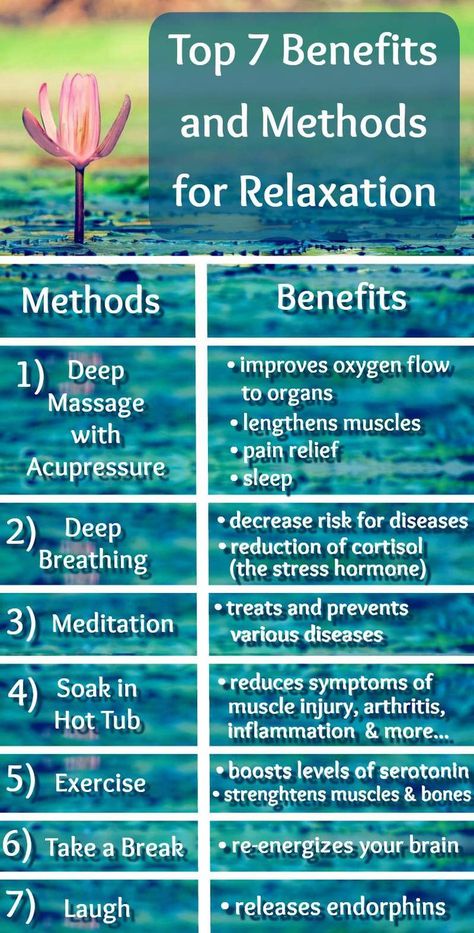
2. "Follow the Leader"
More suitable for children over five years old. Ask your child to introduce a friend, sibling, or someone they enjoy spending time with. Then ask which of them is the leader and comes up with games. If your child sees himself as a leader, ask him to imagine that he is "breath". If he prefers to follow the leader, he is a "thought". For example, he chose his older brother as his best friend, and then the older brother is the leader.
Exercise
- Sit back and close your eyes.
- Concentrate on your breath and try to breathe more slowly, taking deep breaths and slow exhalations.
- Let your thoughts follow your breath. Imagine that you are a thought, and your breath is your big brother.
- Count how many seconds your exhalation lasts. Don't let your thoughts run ahead. She will try to do this, but try to make her follow the breath.
- Before exhaling, slowly count to ten.
3.
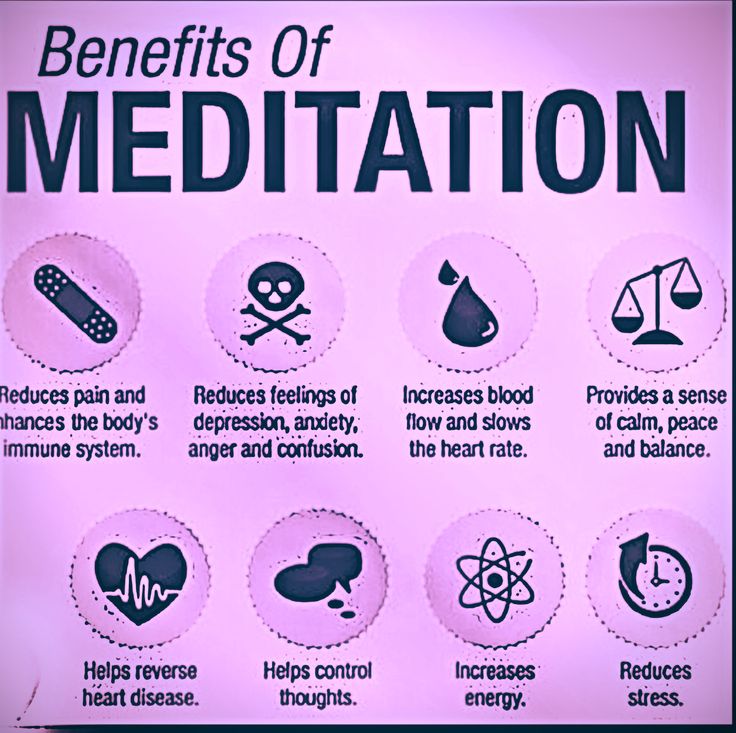 Universal relaxation technique
Universal relaxation technique This practice is suitable for both children and adults. She solves problems with sleep, a long period of stress or illness, liberates before public speaking. It is based on a progressive muscle relaxation technique developed by psychotherapist Edmund Jacobson in the 1920s for anxious patients.
Exercise
- Get into a comfortable sitting or lying position and close your eyes. You can lie down on a pillow and cover yourself with a blanket.
- Take a few deep breaths in and out.
- Direct your attention to the right foot. Squeeze it very, very hard, tucking all five fingers inward. Hold it in this position for two deep breaths.
- Sharply relax your foot and feel how the tension dissolves. You may feel a slight tingling in your muscles.
- Shift your attention to the left foot (the “tension-relaxation” cycle is repeated).
- Slowly move along the whole body, continuing to squeeze and unclench the muscles (if this is difficult, you can squeeze or massage them with your hand) and breathe deeply.
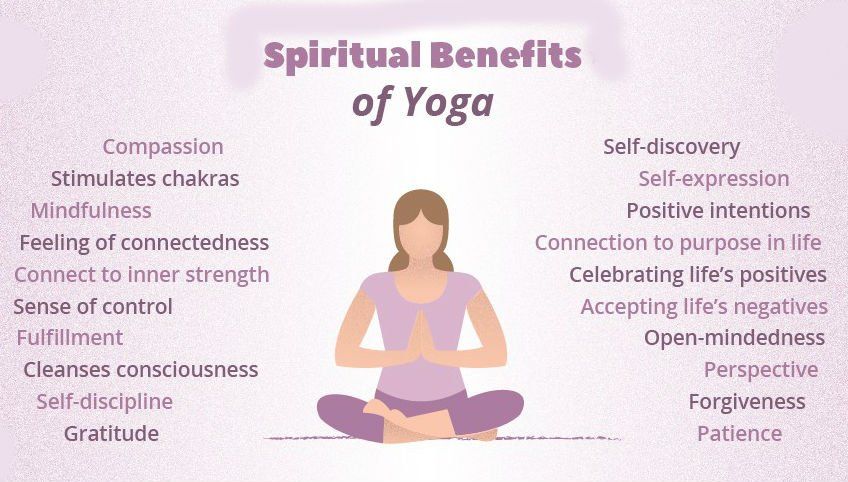 Here is an approximate sequence: right foot - left foot; right shin - left shin; right knee - left knee; right thigh - left thigh; feet and legs along the entire length; hips; buttocks; stomach; the whole body below the belt; rib cage; right hand - left hand; right palm - left palm; shoulders; neck; face.
Here is an approximate sequence: right foot - left foot; right shin - left shin; right knee - left knee; right thigh - left thigh; feet and legs along the entire length; hips; buttocks; stomach; the whole body below the belt; rib cage; right hand - left hand; right palm - left palm; shoulders; neck; face.
Text: Xenia Diakova-Tinoku Photo credit: Getty Images
New on the site
“My husband nearly killed me twice, but I'm afraid of getting divorced. What if he takes the child away?
All ages of male sexuality
“It’s time for you to get treatment!”: 16 phrases of domestic abusers - check your relationship
5 signs of a crisis in your relationship
“My daughter thinks that only grades are important to me. How can I show that I love her?
March cat: how to survive as a family when the pet has a passion
"Make yourself": what is the price of professional success
"No one writes to the Colonel": what to do if there are no friends - 4 easy steps
Benefits of meditation for children | Mothers today
Every time meditation picks up pace in a world that moves faster and faster and stress and anxiety are bread and butter.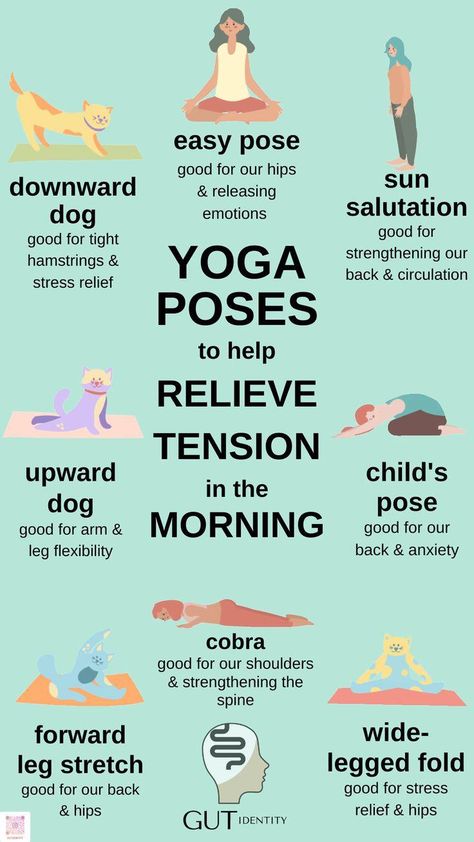 Its benefits are becoming more and more known, and interest in it is growing. Children can take advantage of meditation. Let's see what they are.
Its benefits are becoming more and more known, and interest in it is growing. Children can take advantage of meditation. Let's see what they are.
Index
- 1 What is meditation?
- 2 Why teach children to meditate?
- 3 Benefits of meditation for children
- 4 At what age can children meditate?
What is meditation?
Meditation is often confused with contemplation But that's not the point. Meditation is to learn to listen to yourself There are attention exercises in a world where there are many stimuli that catch it, but where we miss the signals of our own body. He constantly and completely directs our attention to something specific. Listening to your emotions, feelings, your being can be directed at yourself. Or you can also focus your attention on a specific object such as a fire. It consists in being here and now.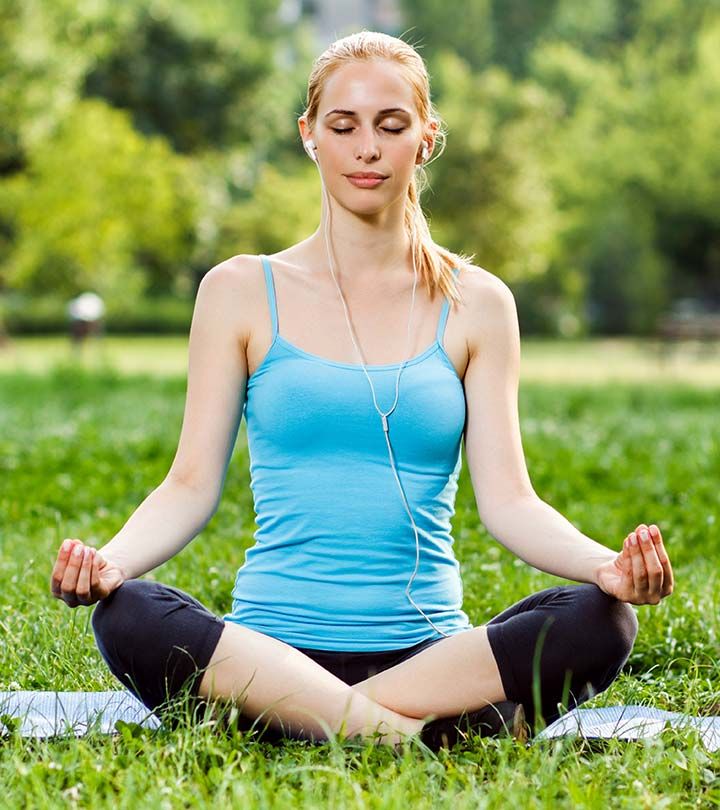
Don't have a wish list yet?: Create your free birth list
Breathing is very present in meditation. This is usually the focus of attention during meditation. Just focus on what we do naturally and unconsciously.
Although meditation is associated with the Buddhist religion, it can be practiced regardless of your religious beliefs.
Why teach children meditation?
Well, for the same reasons old people should meditate. We live in a world where everything is still there, we want everything quickly and at the moment. In such a world We must learn to stop, observe ourselves, breathe consciously, be aware of ourselves.
If in adults this is beneficial, in children with fully developed brains it is pure gold in what they can achieve.
Benefits of Meditation for Children
Parents and children can enjoy the many physical and mental health benefits of meditation. Below we look at the benefits of meditation for children.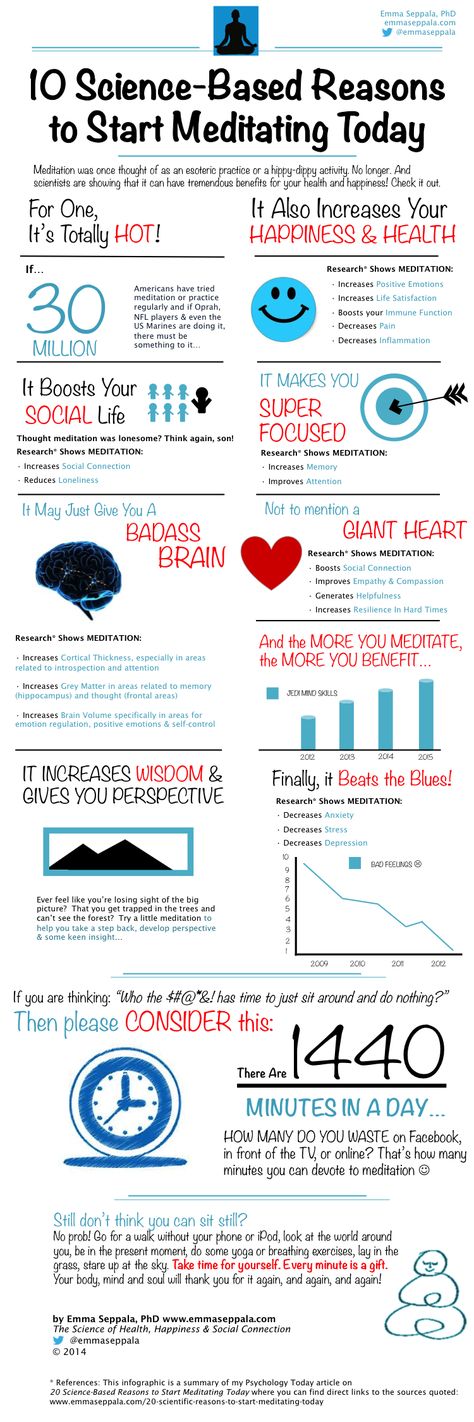
- Helps to reduce stress and anxiety children, which helps them to calm down. Meditation has an immediate effect.
- Improve your emotional intelligence . In a calm state, it is easier to manage emotions without getting carried away by them.
- Improves concentration . By working on mindfulness, it is strengthened, and it is easier for them to direct and consciously direct attention where the child wants.
- Activate imagination and creativity . In the alpha state of our mind achieved during meditation, this is the best time and place for creativity. The best ideas usually come from this state, which is the state we are in right before we sleep.
- This will increase your self-esteem . They will learn to know themselves and accept themselves, gain security and self-confidence. They will grow inside.
- Su immune system will improve .
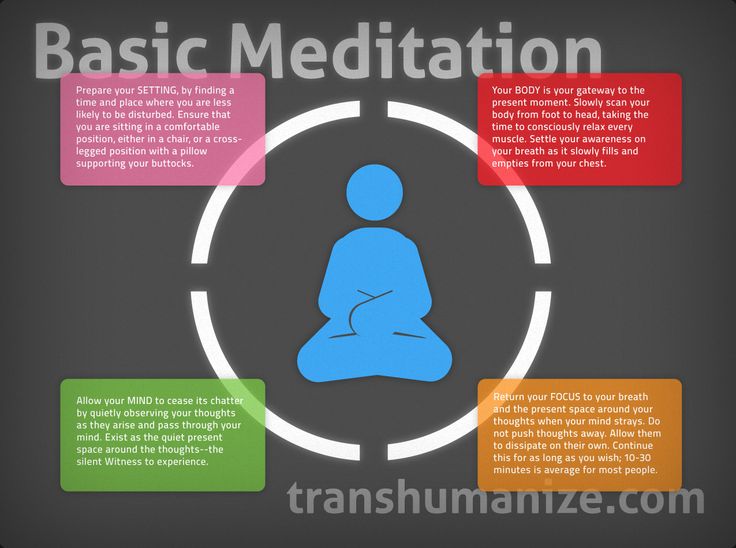
- Improves your cardiovascular and neurological performance.
- Their cognitive skills are developed : attention, logic, calculation ...
- Develops abilities such as empathy, compassion and assertiveness, which improves their socialization.
- Better to bear disappointment with which you find.
- It will be healthier and happier adults.
At what age can children practice meditation?
Small children are already beginning to behave as they approach meditation, but at 6-7 years old they can fully engage in meditation. Children already know that they learn by playing, so meditation should be presented as a game to keep them interested.
All of these benefits are great, but if the child doesn't want to, they can't be forced . We can explain it to them and do it with them, but if they don't want anything, we can do it.